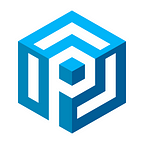Optherium is a Blockchain-as-a-service provider
Optherium is building a Global Finance Blockchain Infrastructure.
Optherium’s Operating System and MultiDecentralized Private Blockchains Network™ fundamentally changes blockchain technology, making it highly usable for business.
The company was established as a Blockchain-as-a-service provider for Fortune 500 enterprises. It’s mission is to push the world towards a new private blockchain standard, upon which the digital economy can be scaled into a global platform.
Optherium seamlessly integrates blockchain technology into businesses in order to make data storage more secure. As a result, business receive exclusive benefits from blockchain technology in their daily lives.
It’s mission is to push the world towards a new private blockchain standard, upon which the digital economy can be scaled into a global platform.
For who? Banks, insurance, law firms, exchanges, eCommerce, social networks, funds, brokers, government facilities, military sector.
Case 1: GDPR compliance
How the Ecosystem Works with GDPR Compliance:
Encryption and pseudonymisation
Pseudonymisation is achieved by splitting data between multiple Sensitive Storage Modules. Participants on the network do not have access to raw personal data unless it is necessary for processing. Every Sensitive Storage Module, in a cluster, encrypts data with its own private key using AES256 standard.
Decentralized reading
Writing to a blockchain is always decentralized (each node simulates the transaction and then adds it to a ledger,) but read operations go through one node. If store personal data on a blockchain (permissioned) the compromise of a single node could lead to the compromise of all your data. Splitting data in fragmented parts across multiple nodes, no single processor has access to the full set of data.
Logging
GDPR requires a log of all operations involving PII data. Optherium’s solution presents logs that are written to multiple blockchain networks on different levels. These logs can be easily shared with authorities or with any other parties without PII data disclosure.
Communications — client to controller, controller to controller, or controller to processor — take effect on multiple blockchain networks, creating a reviewable log of operations. Blockchain networks can be shared with the trusted Supervisory Authority Blockchain networks. Outdated data can easily be archived and replaced with an empty blockchain network
Defined rules and purposes
Defined rules and purposes facilitate data storage and retrieval. The function defines roles and permissions of participants via smart contract on the Controller’s network.
All participants have unique credentials (private keys and certificates) issued by the Certificate Authority. These credentials can be revoked. When a user provides data to a Connector, he accepts the Controller’s rules and purposes with his own unique credentials/private key.
For more information watch the presentation.
Our websites:
